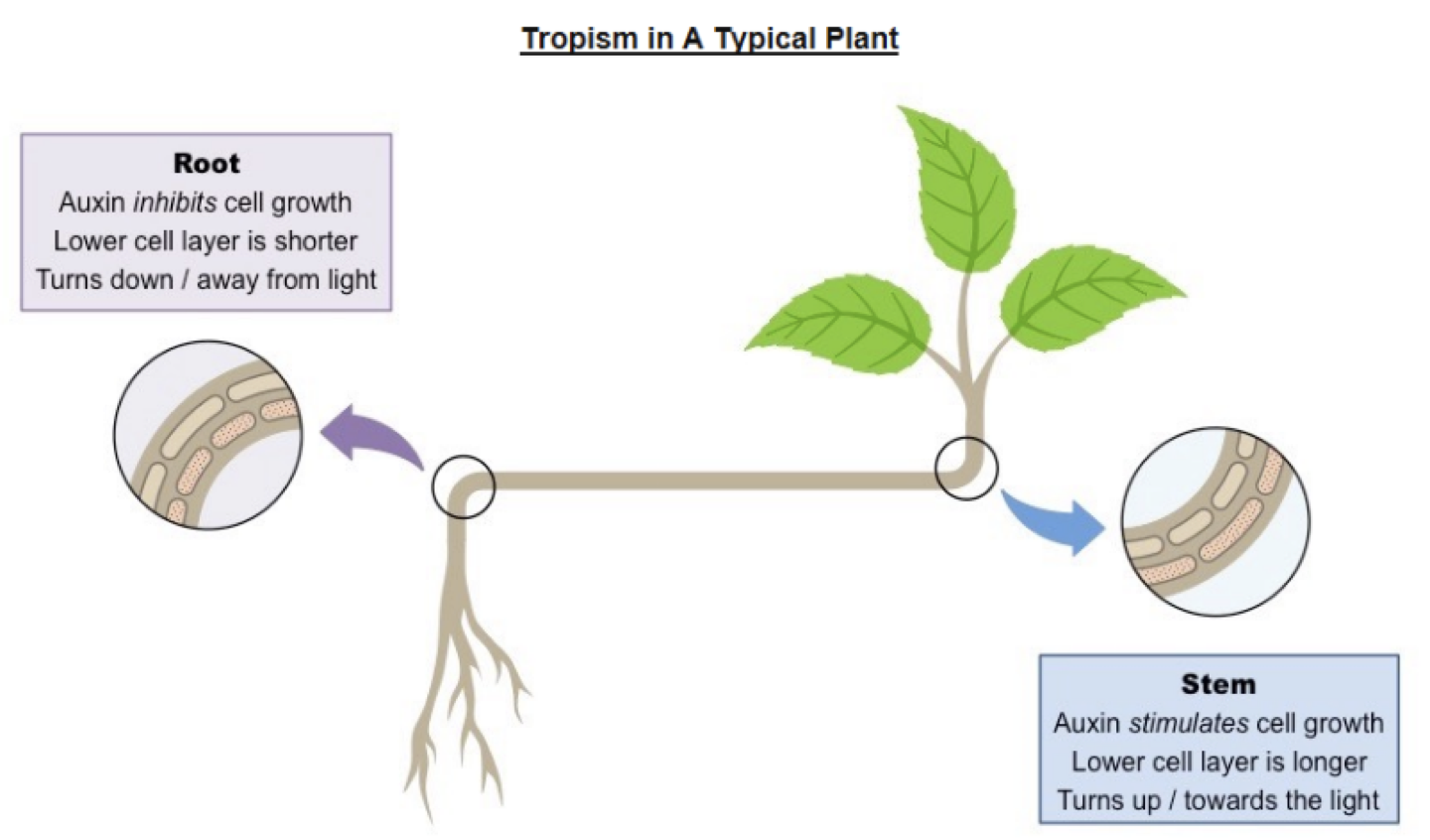tropisms + experiments
phototropism steps
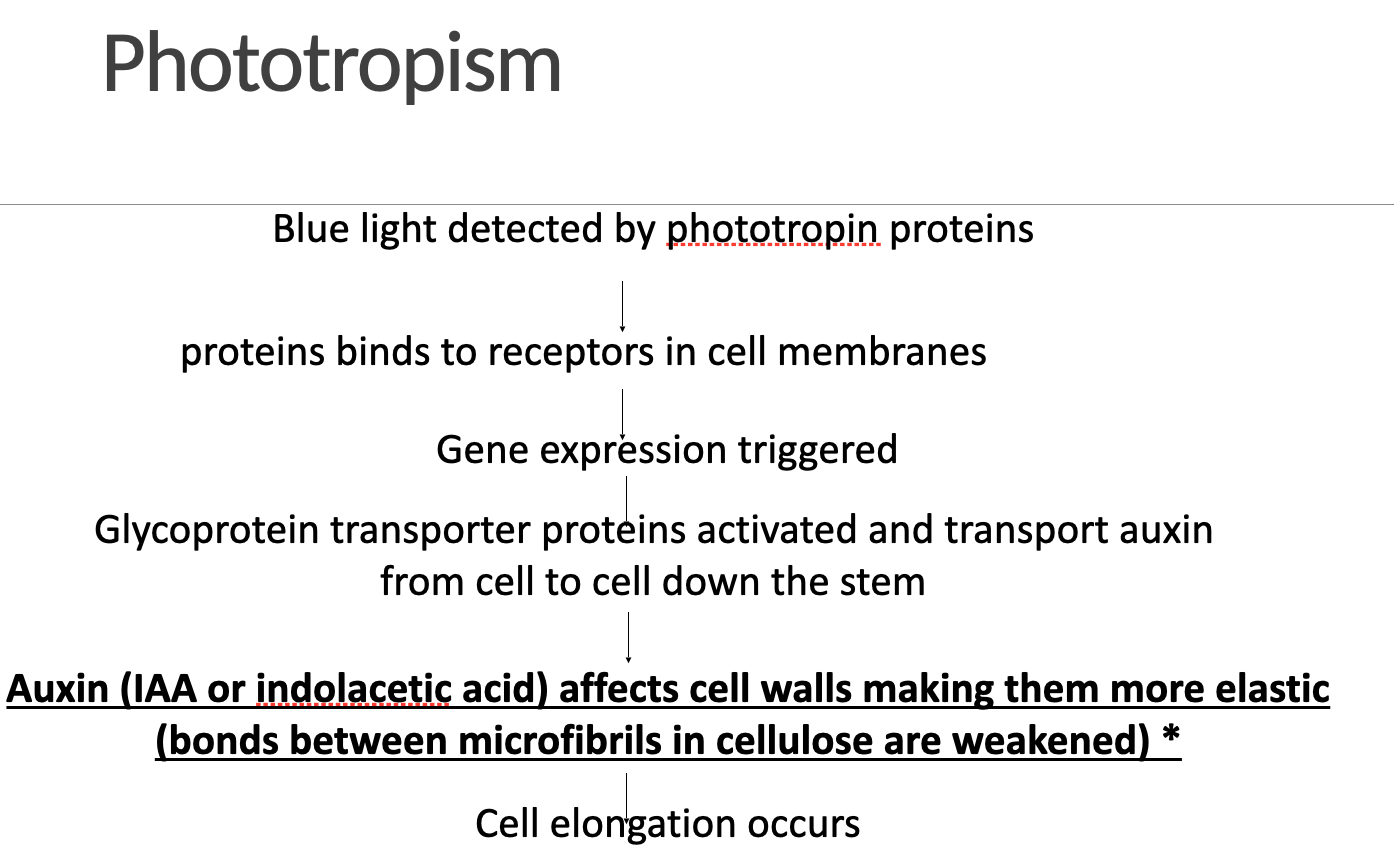
what causes phototropisms
Phototropism – growth towards light
All shoots bend towards the light
Shaded side elongates faster than the lit side
Light shining on one side causes Auxins to be transported to the shaded side
Promotes and increases elongation on the shaded side
How light causes this redistribution is uncertain
Darwin's Experiment (1880)
Darwin discovered that removing the tip of a coleoptile stopped the phototropic response to a unidirectional light source (light coming from one side) from occurring
To ensure this was not simply due to the wounding caused to the plant, he covered the tip of a coleoptile with an opaque cover or 'cap' instead, to block out the light. This also stopped the phototropic response from occurring, showing that the tip of the coleoptile was responsible for detecting light

Boysen-Jensen's Experiment (1913)
Boysen-Jensen found that if he replaced the cut tip back on top of the coleoptile and inserted a gelatin block as a barrier in between, the phototropic response was restored
This showed that the stimulus for growth was a chemical (hormone), which was able to travel through the gelatin block
Bosen-Jensen then inserted a mica barrier (mica is impermeable to chemicals) halfway through the coleoptile just below the tip, first on the lit side and then on the shaded side
When the mica barrier was inserted into the lit side, the phototropic response occurred
When the mica barrier was inserted into the shaded side, the phototropic response did not occur
This confirmed that the stimulus for growth was a chemical (hormone) and showed that it was produced at the tip, before travelling down the coleoptile on the side opposite to the stimulus (i.e. the shaded side)
It also showed that the stimulus acted by causing growth on the shaded side (rather than inhibiting growth on the lit side)

Paál's Experiment (1919)
Paál cut off the tip of a coleoptile and then replaced it off-centre in the dark
The side of the coleoptile that the tip was placed on grew more than the other side, causing the coleoptile to curve (similar to a phototropic response)
This showed that, in the light, the phototropic response was caused by a hormone diffusing through the plant tissue and stimulating the growth of the tissue
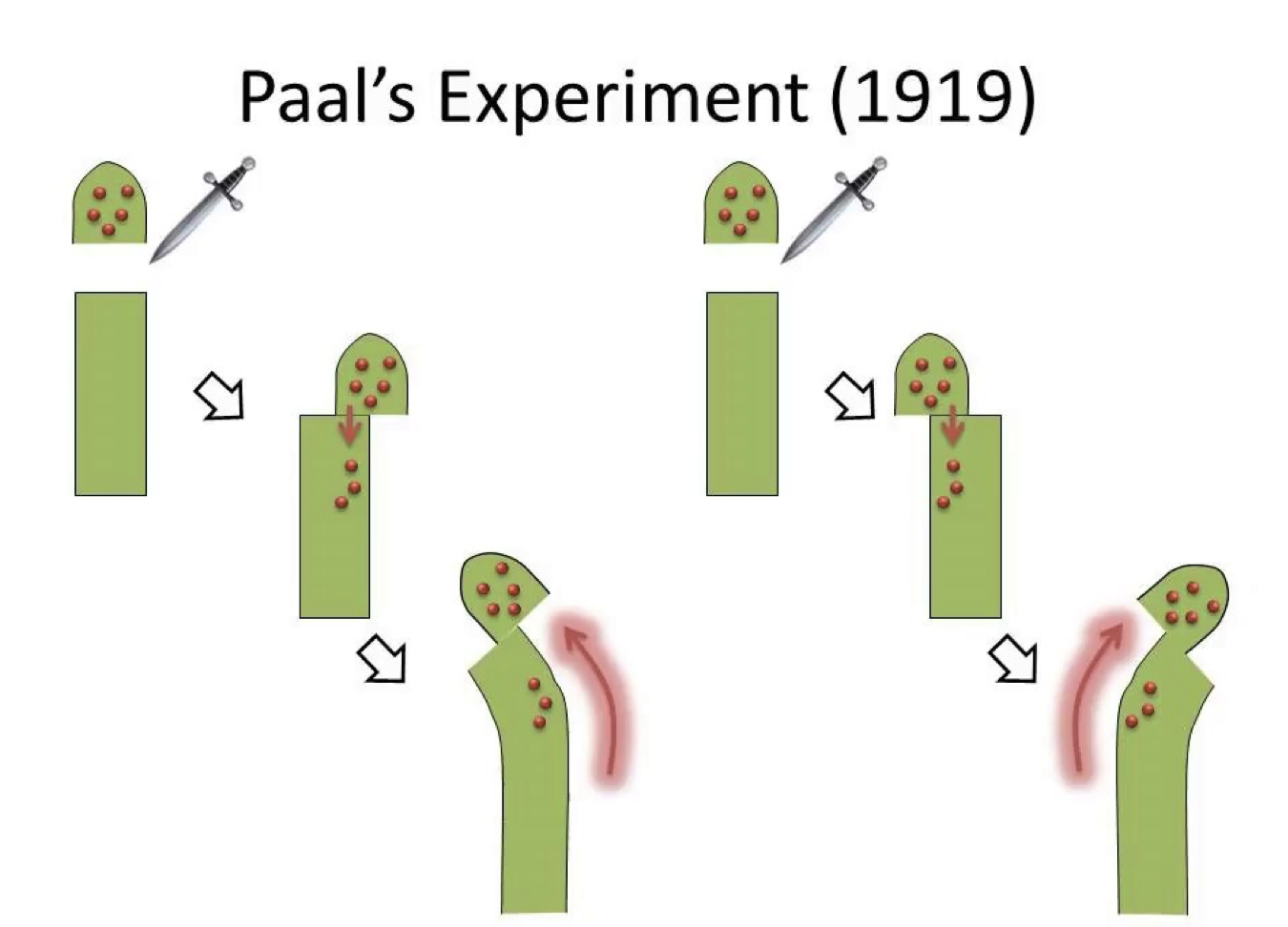
Went's Experiment (1926)
Went placed the cut tip of a coleoptile on a gelatin block, allowing the hormones from the tip to diffuse into the block
The block was then placed on the coleoptile, off-centre and in the dark
As in Paál's experiment, the side of the coleoptile that the block was placed on grew more than the other side, causing the coleoptile to curve
The greater the concentration of hormone present in the block, the more the coleoptile curved
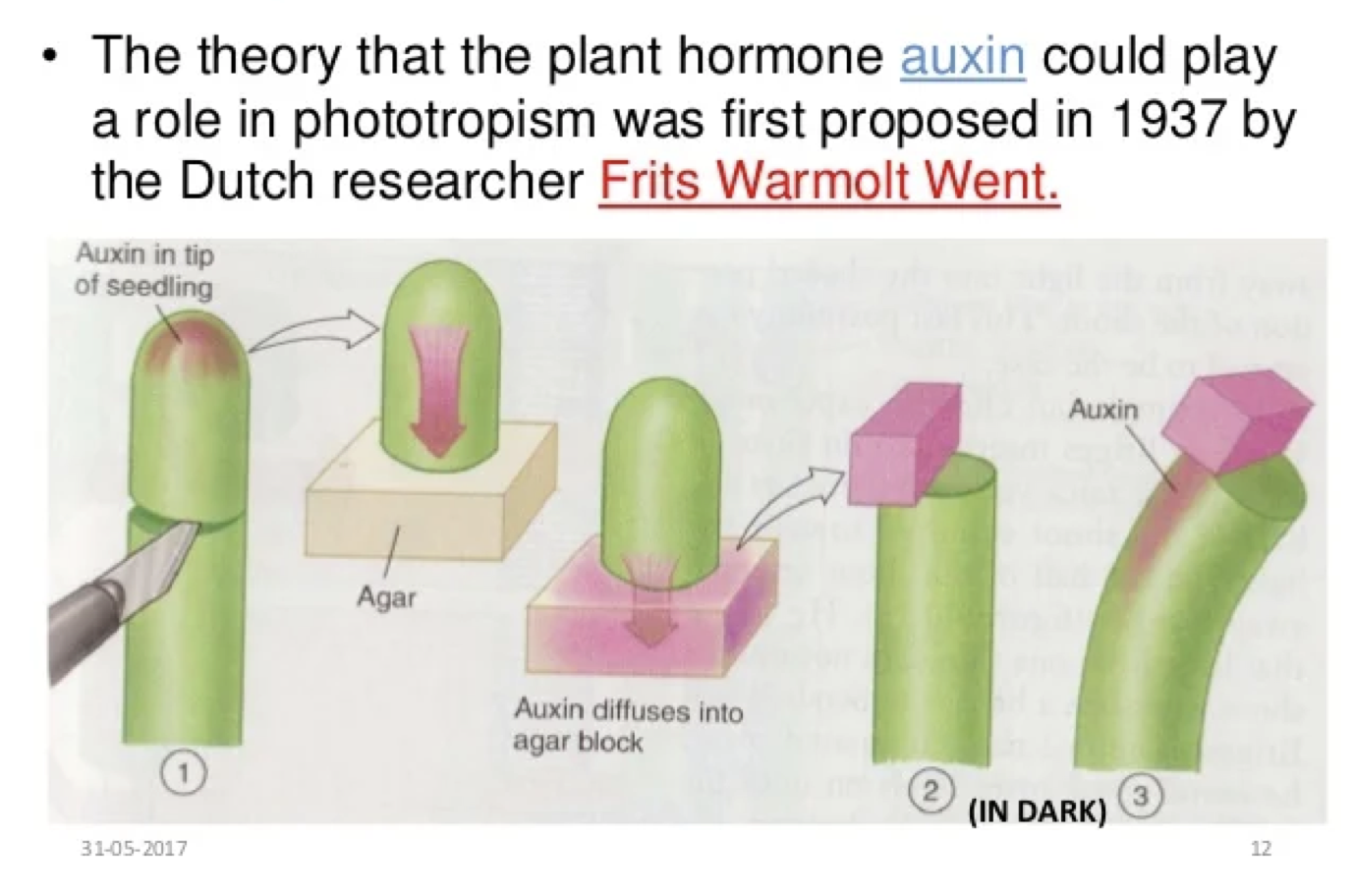
cause of auxin redistribution
Two enzymes called phototropin 1 and 2
Their activity is increased when they absorb blue light, so more activity on the side of the shoot light shines.
less activity on dark side so gradient is set up which is thought to cause redistribution of auxin
If phototropins in tip detect greater intensity of light on one side of stem than the other, auxin transported laterally from side w brighter light to shaded side.
Higher concentrations of auxin on shadier side of stem cause cell elongation on this side, so stem grows in curve towards source of brighter light.
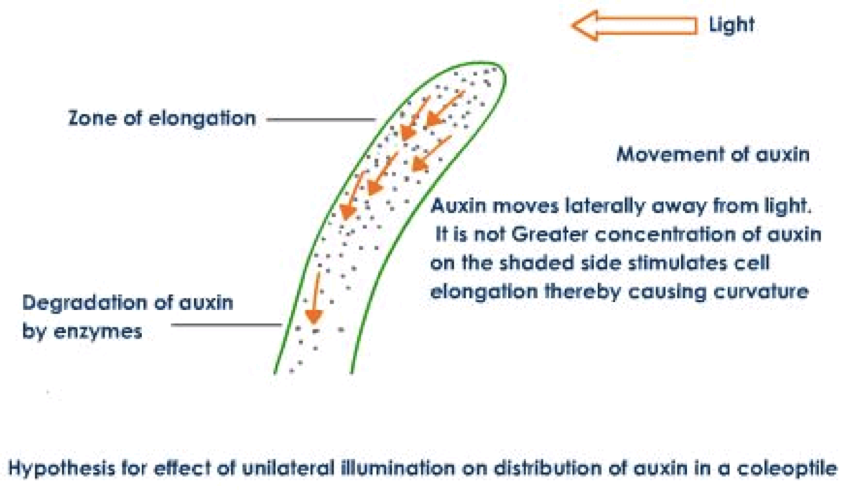
how it works
Auxins exert their influence in an unknown way, possibly by somehow attracting nutrients to the apex.
As auxins move down the other parts of the plant, they stimulate elongation of cells just behind the apical meristem, but inhibit the growth of the lateral pubs.
Apical dominance is a classical example of one part of a plant controlling another, via the influence of a growth substance
This is called CORRELATION.
The degree of dominance of the apical bud is, however, very variable between species.
Example:
In tall unbranched species of the sunflower, apical dominance is strict and extends over the entire stem.
In shorter plants like the tomato plant, apical dominance may extend only as far as the first few lateral buds.
Auxin (IAA or indoleacetic acid) affects cell walls making them more elastic (bonds between microfibrils in cellulose are weakened)
More auxin= more cell elongation.
Auxin increases the stretchiness of the cell wall by promoting active transport of H+ ions into the cell wall (energy provided by ATPase).
H+ ions decrease pH, which wall-loosening enzymes (expansins) work best at.
Expansins break bonds within the cellulose. Simultaneously, H+ ions disrupt hydrogen bonds within the cellulose. Both lead to less rigid cell walls that can expand and stretch
